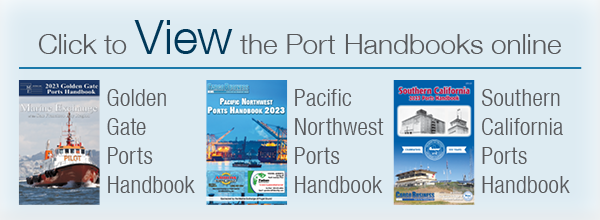|
By Matt Sullivan, DAT Solutions
Three years ago, Hurricane Harvey was the first major hurricane to make landfall in the United States in more than a decade and part of the costliest tropical cyclone season on record. Bringing extensive damage to Texas and Louisiana, Harvey upended lives and caused supply chain disruptions across the South. It was one of six major hurricanes in 2017, including Irma and Maria.
"In 2020, we expect more, stronger, and longer-lived storms than average," explained Gerry Bell, lead seasonal hurricane forecaster at the National Oceanic and Atmospheric Administration. "This is one of the most active seasonal forecasts that NOAA has produced in its 22-year history of hurricane outlooks."
An average hurricane season produces 12 named storms, including six hurricanes with an average of three becoming major hurricanes. Five named storms have made landfall already this season, three as tropical storms and two as hurricanes.
With freight markets already dislocated as a result of COVID-19, how would a hurricane affect supply chains further?
Familiar patterns
Each storm is different, and no one forecast is right every time, but satellite imagery and computer models have produced more accurate assessments of when and where hurricanes and tropical storms will hit.
Freight typically follows a three-step pattern when a big storm is in the forecast.
In the days before the storm arrives, the spot truckload freight market heats up. Load availability rises dramatically in places where bad weather might hit and cools off virtually everywhere else as shippers and freight brokers stage inventory and relief supplies within a safe distance.
During the storm, freight movement slows as people hunker down and travel is restricted.
After the storm, van and reefer carriers are in demand first—they're needed to bring that repositioned freight into affected areas. Then flatbed demand picks up as construction supplies and equipment come in for heavy-duty cleanup and rebuilding.
Keeping freight moving
Throughout this process, freight brokers and shippers turn to the spot market for capacity. For an example, let's go back to Houston during the week of August 25, 2017, when Harvey came ashore.
During the week prior, lanes into warehouses and distribution centers on the outskirts of San Antonio, Dallas, Austin, Lafayette, La., and other metro areas within a day's drive of Houston were busy as shippers repositioned inventory.
Then, as Harvey neared, the number of available outbound loads from Houston plunged 72%
|

compared to the previous week. Despite the loss of volume, the average outbound spot van rate from Houston increased 20% to $2.03 a mile. Houston to New Orleans jumped 89 cents to $3.21 a mile on 80% less volume.
At the same time carriers also earned top dollar to bring freight into Houston. Dallas to Houston topped $4.00 a mile, unheard of at the time and up $1.60 from the previous week.
After the storm, the rearrangement of supply chains, the difficulty of shipping in the flooded region, and increased seasonal demand in other parts of the country combined to create pockets of tight capacity that put extra pressure on truckload rates.
Another cost of Hurricane Harvey: many Houston-area refineries were offline and diesel prices shot up 15 cents a gallon.
Emergency relief
The spot market presents opportunities to move relief supplies. As a point of reference, during the four-week period in 2017 that included Hurricanes Harvey and Irma, posts for dry van, refrigerated, and flatbed loads increased 28%, 17%, and 67%, respectively, as relief agencies sought immediate available capacity.
In a declared emergency, the federal government can provide a wide range of assistance for individuals and public infrastructure, including funds for trucking and logistics administered through the U.S. Federal Emergency Management Agency (FEMA). The better load boards are equipped to specifically help brokers and carriers connect and move FEMA loads and emergency freight fast.
Brokers and carriers can also learn about immediate needs at American Logistics Aid Network (ALAN). ALAN loads won't necessarily be FEMA freight but they could still be emergency relief for local people trying to put their lives back together. You can learn more about ALAN at alanaid.org and see a current map and list of aid requests.
No one wants the disruption that a big storm can bring, but shippers, brokers, and carriers play a major role in helping people and communities rebuild, resupply, and return to normal. With storms in the forecast, there's no better time than now to prepare—and to prepare to be busy.
Matt Sullivan is a writer and editor at DAT Solutions, which operates the industry's largest network of load boards for truckload freight and capacity. He is based in Portland, Ore. DAT has resources for brokers and carriers moving emergency freight at dat.com/industry-trends/emergency-freight.
|


